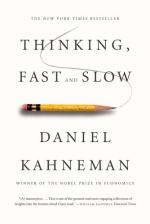|
This section contains 1,029 words (approx. 3 pages at 400 words per page) |

|
Summary
Conscious thinking contains questions about how one’s life or career is going and if there should be a refocus or whether new actions need to be taken. This function is handled by System 1 thinking and is only elevated to Section 2 thinking if extra effort is required. Measuring cognitive ease is a way to respond to those questions. The range of the measurement is between “Easy” and “Strained.” Easy means that things are going well; strained indicates that there is a problem that System 2 needs to address. When an individual is in a state of “ease” he is in a good mood. Conversely, a person who is strained is suspicious and more intense and permits limited intuitiveness and creativity.
Familiarity has an element of “pastness” that makes a connection to prior experiences and gives the individual a sense of ease. But it is...
(read more from the Chapters 5 - 9 Summary)
|
This section contains 1,029 words (approx. 3 pages at 400 words per page) |

|




